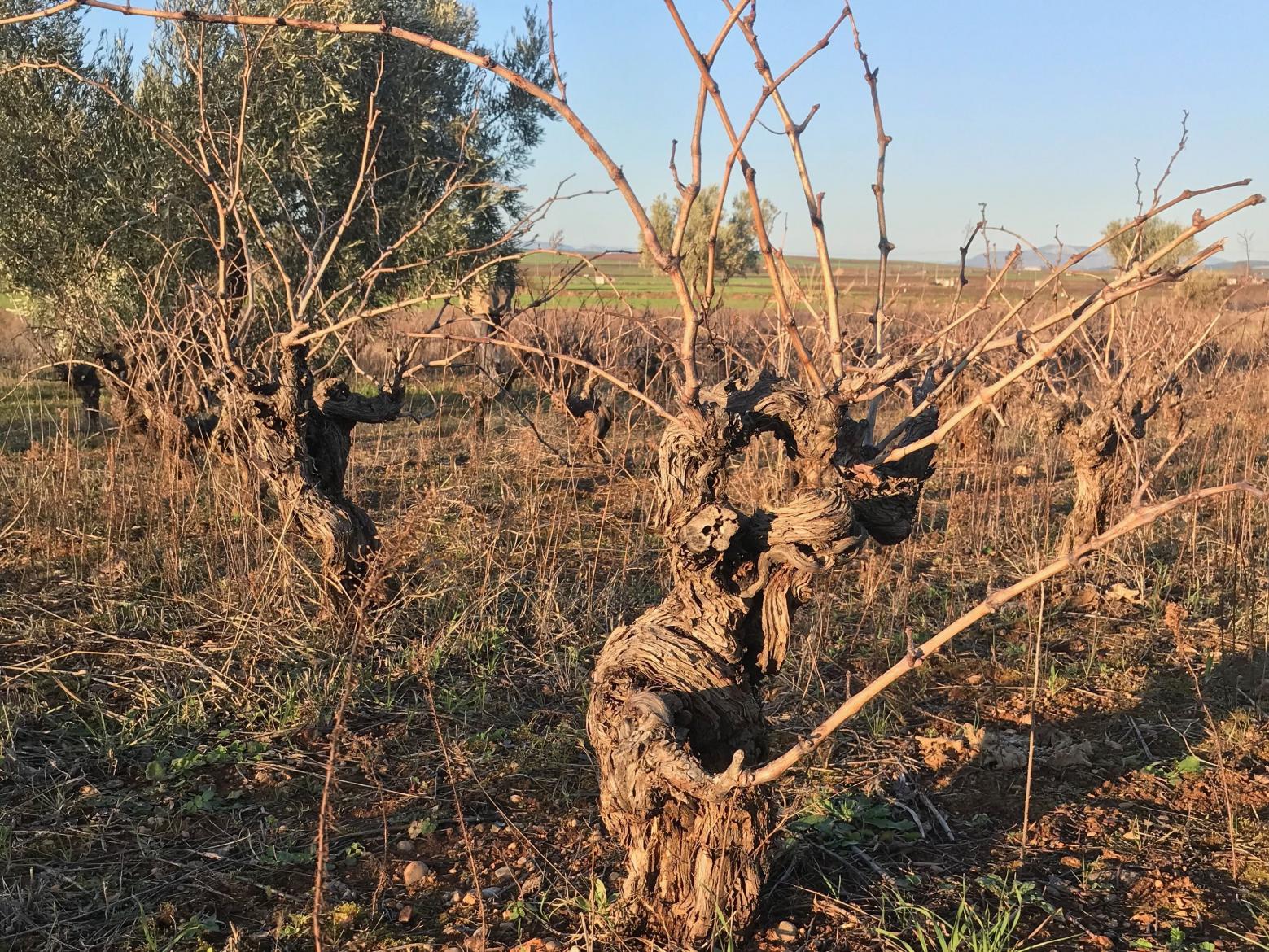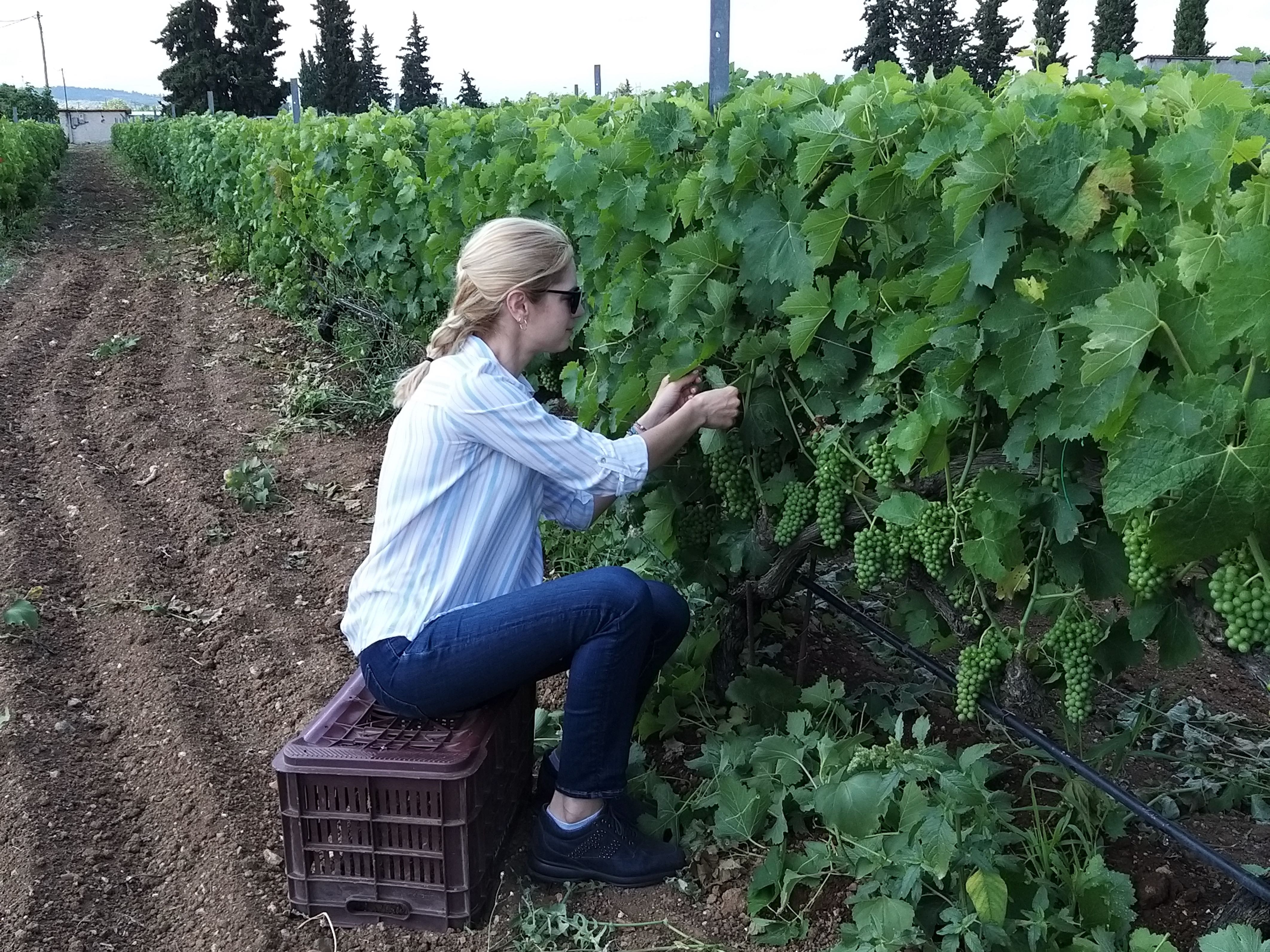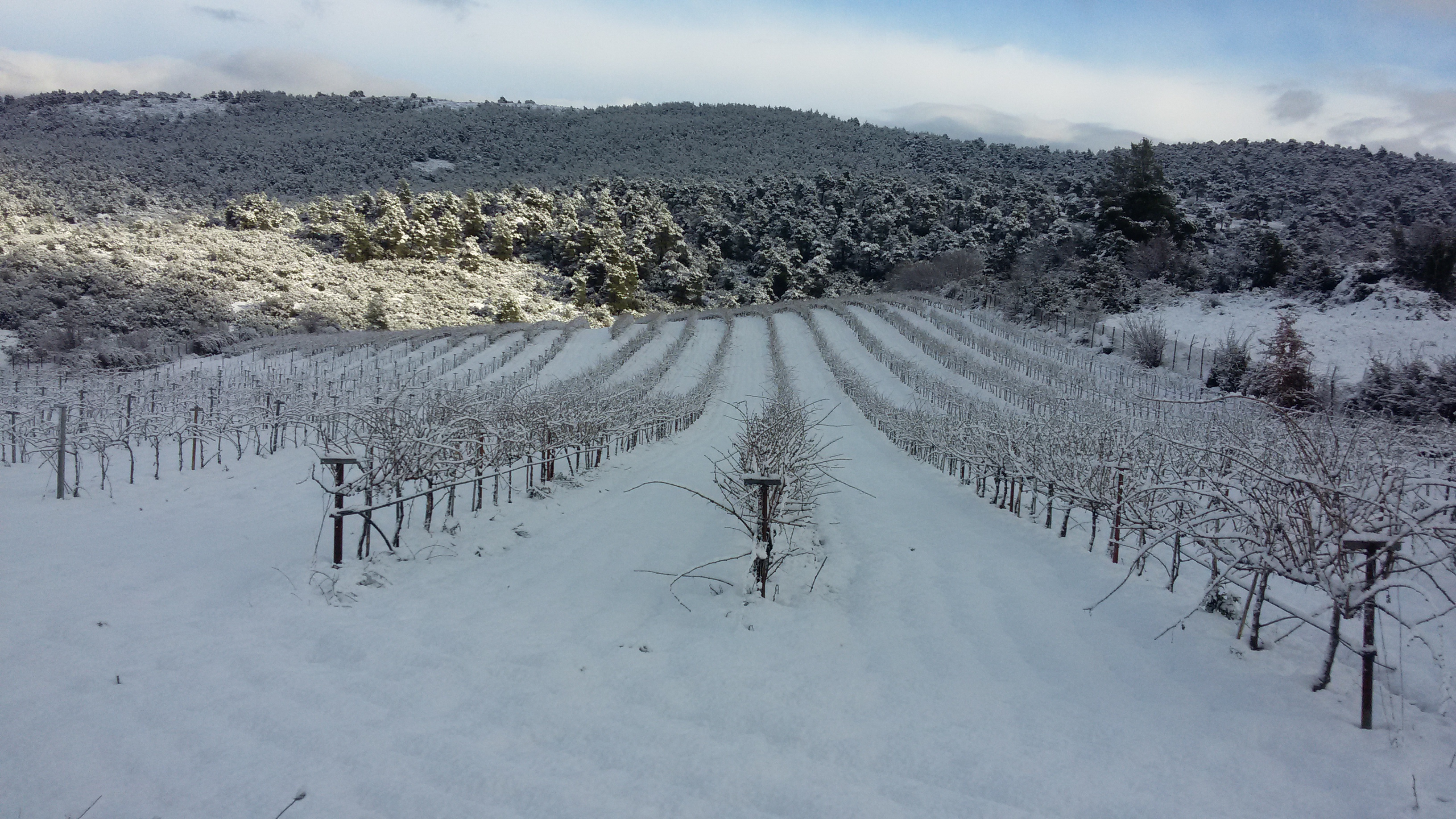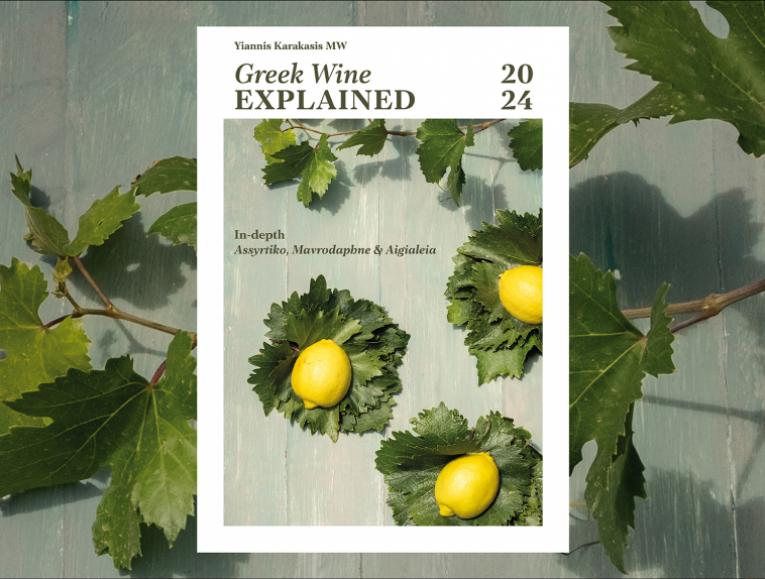Discovering Boeotia Part 2
This is Olga's second part on the wines of Boetia region. See here for part 1.
By Olga Antoniadou
Akriotou Microwinery
I spoke to Kiki Akriotou, the owner and winemaker, who has spent many years as the oenologist for a number of wineries and “at some point I decided I would like to take advantage of the existing family vineyards and carry out my own vision”. In 2015, she made her first wine, which was put on the market the following year and in 2017 converted grandpa’s old warehouse/pen into her winery. This is situated in Plataies (Plataea), at the foot of Mt Cithaeron where an old 3,5 ha vineyard of old Savatiano (White Koundoura) vines existed from her husband’s family (pictured above), 40-70 years old, unirrigated, low producing goblets (bush vines), but she farms another 2 ha, part of which is in Evia, where 60 yr old Mavri Koundoura, a clone of Mandilaria and Aidani vines are to be found.
Her immediate plans are to plant Assyrtiko and Aidani in Plataies, because for now her Assyrtiko is sourced from Martino in Phthiotis. Her total production is about 40,000 bottles. The climate in the area is marked by hot summers and very cold winters, with much rain and fog, and the vines are at an altitude of about 300 m on a gentle slope. The soil is clayey-loam with much stone. “All my vines are unirrigated, I want my production to be low and the vines to be stressed enough to have their roots digging deep into the soil”. Her farming she considers bordering on organic as most of her vines are old, well adapted and need minimal intervention. The varieties farmed are Savatiano, Assyrtiko and Aidani of the whites and Mavri Koundoura, Pinot Noir, Grenache and recently Cabernet Franc of the reds.
In the winery she uses no barrels at all, “I find that this is more challenging for the winemaker”, works with free-run and first press juice, cools her grapes, cold-soaks, uses flotation to clarify pre-fermentation, “this helps quality”, ferments at low temperatures and does much work with the lees. Her white Erimitis (Savatiano, Assyrtiko, Aidani) is fermented with native yeasts and for her rosé Erimitis she co-vinfies Malagousia and Mavri Koundoura. “It was particularly important to me that I respect my clients and produce wines that differ significantly from theirs”.
Orivatis 2018 Tasted from a magnum.
100% old Savatiano (White Koundoura) goblet vines. I was stunned! A ‘Riesling’ Savatiano. Beautifully balanced, with nice acidity, complexity, and aromas of grapefruit, green apple, white peach, biscuits and minerality, something spicier on the palate, like ginger, with a long savoury, slightly bitter, aftertaste. SRP 14,60 €
The Hermit (Erimitis) 2018
Once again a very well crafted, complex wine made of Savatiano, Assyrtiko, Aidani, fermented with natural yeasts. Aromas of bergamot, melon, a hint of banana, some stone fruit, honeysuckle, with biscuits and marzipan on the long aftertaste. SRP 9,45 €
Agatsa Winery
I spoke to Maria Agatsa (pictured below)who studied Economics and is in charge of the winery, open to visitors, “visitors are always welcome except during the harvest when I need to concentrate on getting everything done according to schedule”. The winery, within the vineyard, is located in Kokkala of Thebes, under Mt Sagmata. It is a 10 ha single piece of land, “very important because it means the grapes are received immediately at harvest”, that produces about 100,000 bottles. A lowland area, near the Yliki lake, with really hot summers. The land has a very slight gradient, and the vines are planted north to south. The soil is described as sandy. They farm sustainably, have to irrigate a little in the summer, and I am told that grey rot can be a problem if they are not careful with leaf cutting to aerate the vines. Wire trained vines that were planted from 1993 to 2007 and include Assyrtiko, Malagousia of the whites and Syrah, Cabernet Sauvignon of the reds. They make a stainless-steel fermented Malagousia, a rosé Syrah through bleeding method, and an Assyrtiko and Syrah that spend about 6 months in barrel.
Ianthi 2020
100% Malagousia. Aromas of ripe peach, melon, banana and white flowers. Nice freshness with medium length on the palate. Easy drinking and excellent value for money. SRP 4,90 €
Ianthi 2020 Rosé
100% Syrah. Aromas of strawberry, cherries and roses, slightly yeasty on the palate, well-balanced, some residual sugar and medium aftertaste. Once again easy drinking and good value for money. SRP 4,90 €
Ktima Antoniou
I spoke to owner and 3rd generation vine grower Sotiris Antoniou. The winery was founded in 2005 and is in Skourta, on a plateau, with vines planted on the slopes of Mt Parnitha (PGI Slopes of Parnitha) which are pictured below. He owns 7 ha, controls another 10 ha contracted. Production in bottle and bag in box. The climate is described as almost continental, dry, with great diurnal variation in the summer, and northwesterly winds. The vines are planted north to south at 450-550 m altitude on slopes and terraces. “Our vineyard is surrounded by wild animals, boars, deer, wolves, which means the whole vineyard is enclosed within a 2 m fence, otherwise we wouldn't harvest any grapes”. The soil is clayey-loam and very acidic. He farms Savatiano (White Koundoura), Roditis Fox both old vines from 1960, Assyrtiko, Moschofilero, Muscat, Sauvignon Blanc and Cabernet Sauvignon, wire-trained, planted in 2000. Unirrigated vines, sustainable farming. In the winery he uses temperature controlled vats, destems, uses natural sedimentation and ferments at low temperatures. Both wines tasted below can definitely improve with some work in the winery, as the area seems to offer good growing conditions.
Ariazi 2019
Assyrtiko, Sauvignon Blanc. Aromas of ripe white peach, melon, banana and pineapple. On the palate a slightly perceptible spritz, with the aromas fading quickly.
Cabernet Sauvignon 2016
100% Cabernet Sauvignon. Aromas of cherries, blackberries, sweet spices and coconut. On the palate much ‘greener’, with tannins that are dry.






